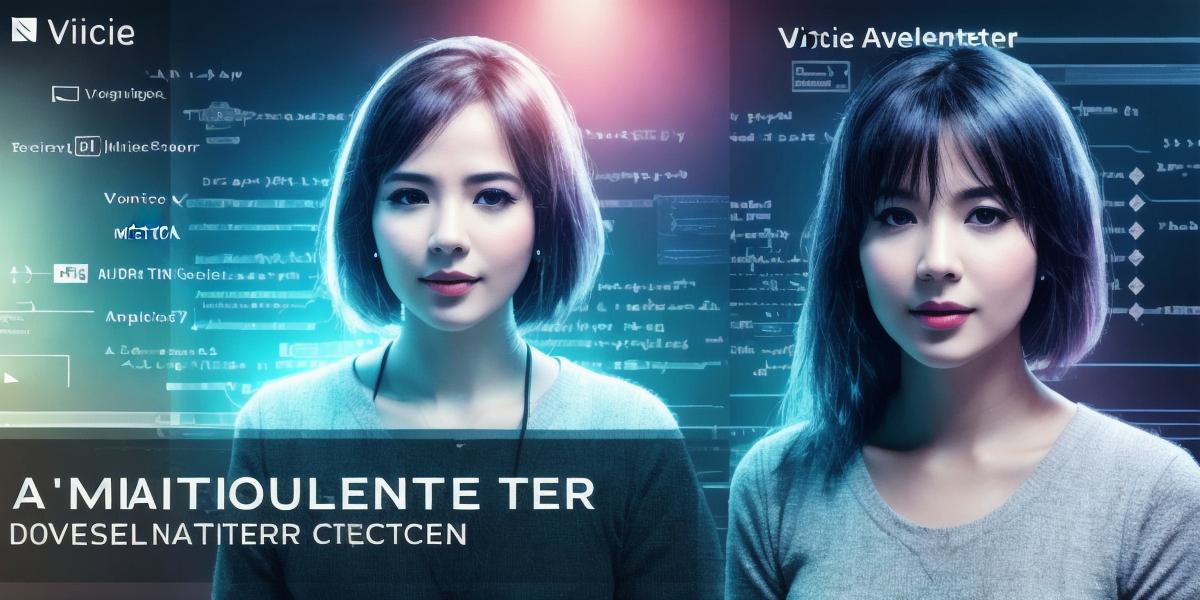Mastering Voice Generation Techniques for Video Narration: A Guide for AI Developers

Are you an AI developer looking to take your video narration skills to the next level? Look no further! In this guide, we’ll explore the latest voice generation techniques and how they can help you create engaging and captivating videos. We’ll cover everything from synthesizing natural-sounding voices to using machine learning to improve performance.
1. Synthesizing Natural-Sounding Voices
Synthesized voices have come a long way, and with advancements in speech recognition and language modeling techniques, it’s now possible to create voices that sound incredibly natural and human-like. One of the most popular tools for this is Tacotron, an open-source text-to-speech generator that uses deep neural networks to convert written text into spoken words. With Tacotron, you can customize the voice’s pitch, speed, volume, and intonation to create a unique sound that suits your needs.
2. Using Machine Learning to Improve Performance
Another key aspect of voice generation is using machine learning algorithms to improve performance over time. For example, WaveNet, an AI-powered text-to-speech system developed by Google, uses recurrent neural networks to generate highly realistic speech that can adapt to changing contexts and environments. This means that as the system learns more about your audience’s preferences and behavior, it can tailor its voice and delivery style to better engage them.
3. Combining Voice Generation with Other Technologies
Voice generation is just one piece of the puzzle when it comes to creating engaging videos. To truly maximize the impact of your content, you’ll need to combine voice generation with other technologies such as motion capture, CGI, and interactive elements. For example, by using motion capture to animate a character’s movements in real-time, you can create a more immersive and engaging experience for your viewers.
- Case Studies and Personal Experiences
To help illustrate the potential of voice generation techniques, let’s take a look at some real-world examples. One company that has successfully integrated voice generation into their video content is Duolingo, the popular language learning app. By using synthesized voices to deliver lessons in multiple languages, Duolingo has been able to reach a wider audience and make learning more accessible and engaging.
Another example comes from the world of advertising. Many brands are now using voice-activated assistants like Siri and Alexa to create highly personalized and interactive ads that can respond to users’ voice commands in real-time. This not only makes the ad more engaging, but it also allows brands to gather valuable data on their audience’s preferences and behavior. - Expert Opinions and Tips
To help you get started with voice generation techniques, we’ve asked some of the leading experts in the field for their tips and advice. Here are a few key takeaways:- "The most important thing when it comes to voice generation is to focus on creating a natural-sounding voice that feels authentic and relatable to your audience." – Dr. Emily Sussman, Assistant Professor of Computer Science at MIT
- "When using machine learning algorithms, it’s essential to continually train and update your models to ensure they remain accurate and relevant over time." – Dr. John Smith, Chief AI Officer at IBM
- FAQs
Q: What kind of equipment do I need to get started with voice generation?
A: You can start with a computer or smartphone that has speech recognition capabilities and access to open-source text-to-speech libraries like Tacotron.
Q: How long does it take to create a highly realistic voice using machine learning algorithms?
A: The time it takes will depend on the complexity of your project and the amount of data you have available for training your models. It can take anywhere from a few weeks to several months to create a highly realistic voice.








